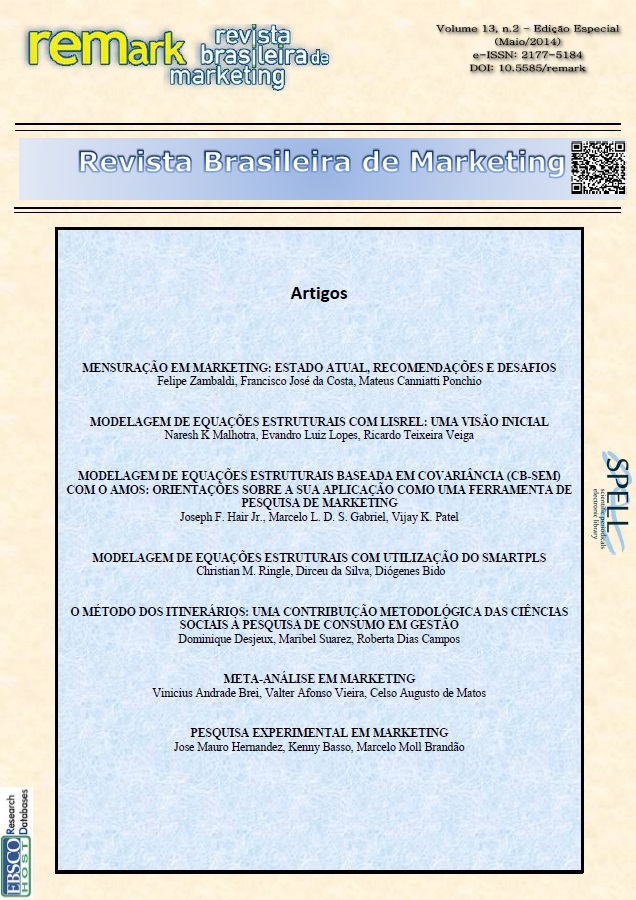Amos Covariance-Based Structural Equation Modeling (Cb-Sem): Guidelines on its Application as a Marketing Research Tool
DOI:
https://doi.org/10.5585/remark.v13i2.2718Keywords:
Structural Equation Modeling (SEM), Covariance-Based SEM, AMOS, Marketing Research.Abstract
Structural equation modeling (SEM) is increasingly a method of choice for concept and theory development in the social sciences, particularly the marketing discipline. In marketing research there increasingly is a need to assess complex multiple latent constructs and relationships. Second-order constructs can be modeled providing an improved theoretical understanding of relationships as well as parsimony. SEM in particular is well suited to investigating complex relationships among multiple constructs. The two most prevalent SEM based analytical methods are covariance-based SEM (CB-SEM) and variance-based SEM (PLS-SEM). While each technique has advantages and limitations, in this article we focus on CB-SEM with AMOS to illustrate its application in examining the relationships between customer orientation, employee orientation, and firm performance. We also demonstrate how higher-order constructs are useful in modeling both responsive and proactive components of customer and employee orientation.Downloads
Published
2014-05-23
How to Cite
Hair Jr., J. F., Gabriel, M. L. D. da S., & Patel, V. K. (2014). Amos Covariance-Based Structural Equation Modeling (Cb-Sem): Guidelines on its Application as a Marketing Research Tool. ReMark - Revista Brasileira De Marketing, 13(2), 44–55. https://doi.org/10.5585/remark.v13i2.2718
Issue
Section
Articles
Views
- Abstract 4078
- PDF (Português (Brasil)) 3202
- PDF/ENGLISH (Português (Brasil)) 1250









